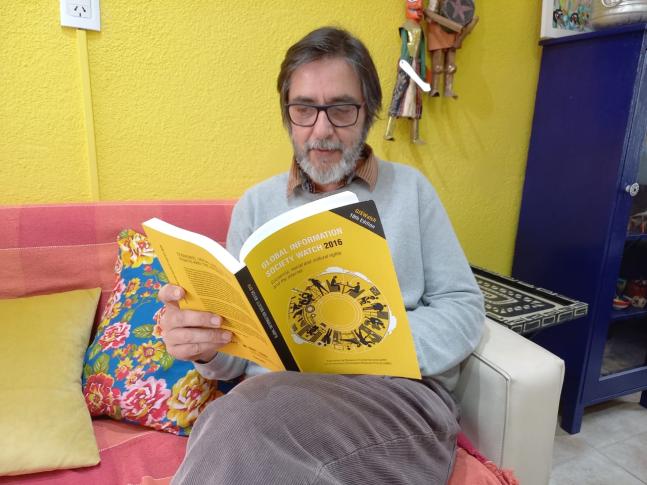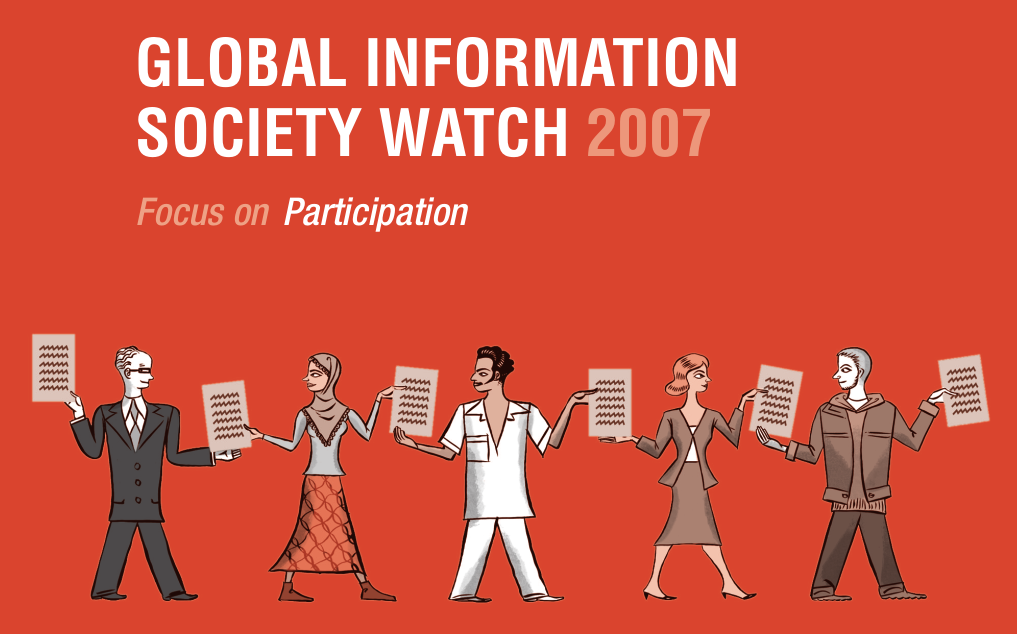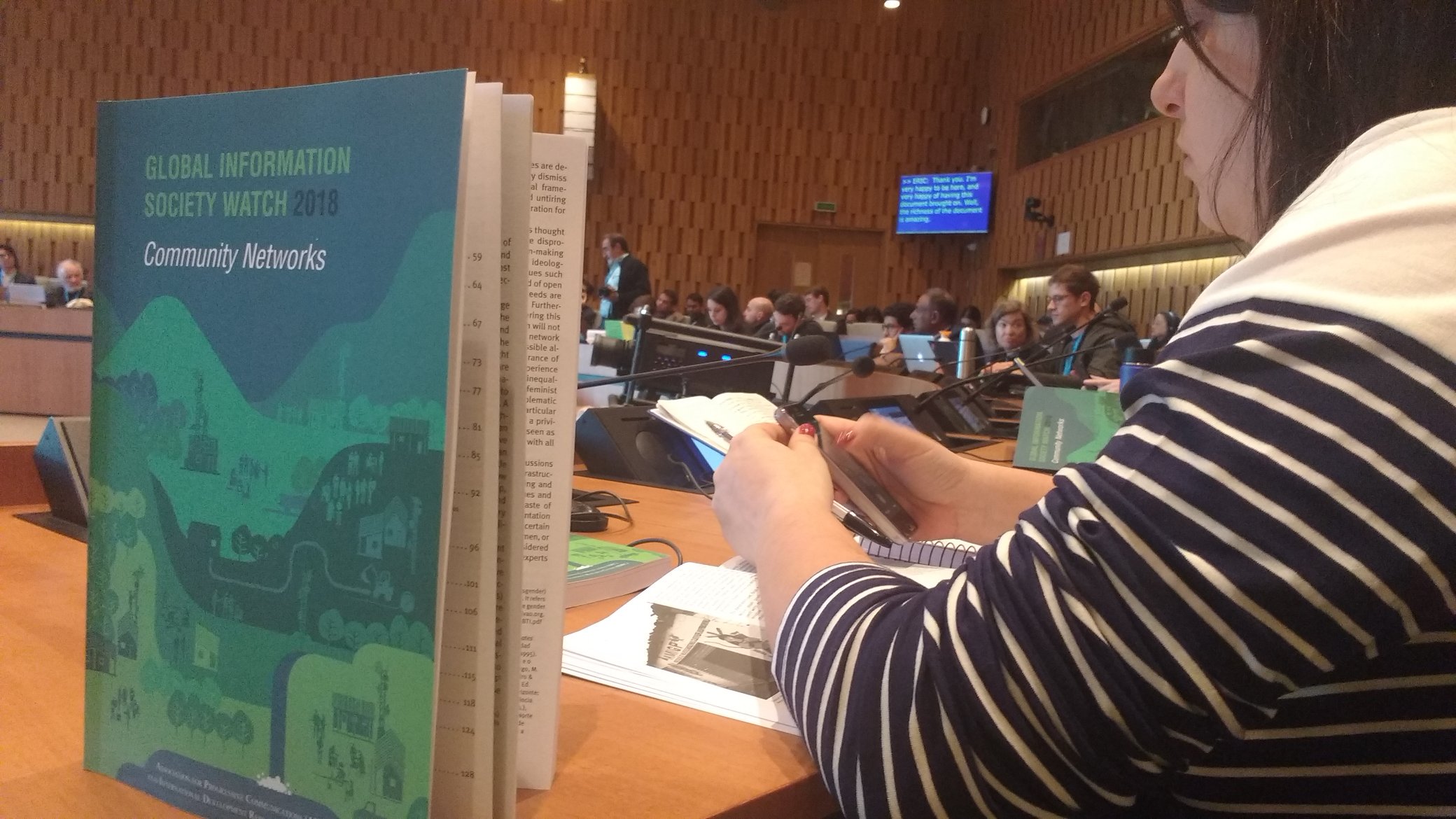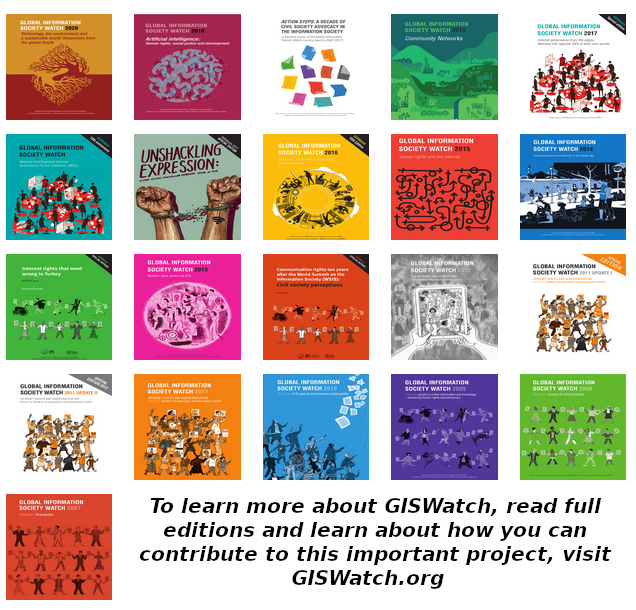
This piece is the first installment of a series celebrating 15 years of APC’s publication, Global Information Society Watch (GISWatch), exploring the origins of this powerful project while looking toward the future. Here, long-time editor Alan Finlay reflects on the early days of GISWatch, the shifts in trends and "hot" topics, and a look at the future.
In 2007 I was asked by the Association for Progressive Communications (APC) to come in as editor of the country reports for a publication they were going to call “Global Information Society Watch”, or GISWatch for short. The first edition, which was being published in the wake of the World Summit of the Information Society, and just after the start of the first ever Internet Governance Forum in 2006, was going to focus on the theme of “Participation”.

There were discussions on how to replicate what Instituto del Tercer Mundo (ITeM), an organisation based in Uruguay, had achieved with a publication it called Social Watch. It aimed to provide a voice for civil society on issues to do with social justice and ending poverty, published country reports, and had developed a ground-base of contributors and collaborators in developing countries across the world. There was also discussion on how GISWatch, with its focus on the information society, would be different. Anriette Esterhuysen, then the executive director of APC, was the driving force behind the initiative. I think there were plans, but not necessarily certainty, that there would be more editions after 2007.
Over the next 15 years I was lucky enough to remain as editor – working on the entire edition, and not just the country reports after 2007 – and it’s been a privilege. GISWatch has introduced me to countless interesting organisations and people doing fascinating work, all, in one way or another, experts in their field. Some of the authors I have been lucky enough to meet; others – especially those who have contributed reports nearly every year over the past 15 years – I felt I got to know over time through their writing.
I have also been fortunate enough to work with different staff members in APC over the years – Pablo Accuosto, Natasha Primo, Roxanne Bassi and Maja Romano, all in their roles as project coordinators, as well as Valeria Betancourt, Karen Banks, Anriette herself, Chat Garcia (APC’s current executive director), Deborah Brown, Kathleen Diga and Flavia Fascendini, as well as Nadz Moawad, Jac sm Kee and Jan Moolman and the team at WRP on the editions on sexual rights and women, amongst others. And, always in the background, double-checking the language and the links and much, much more, the invaluable work of Lori Nordstrom, who also started work on the project in 2007.
[Video: GISWatch launch, Internet Governance Forum 2015]
GISWatch grew as a project. Institutional partners changed, from ITeM, to Hivos, and I think even the IDRC for a few issues. ARTICLE 19 also partnered with APC on an edition on artificial intelligence. The number of country reports swelled from 22 in 2007, to its highest level of some 57 country reports for an edition on “Internet rights and democratisation” in 2011. It settled somewhere between 40 to 50 country reports on average each year. I remember when reaching nearly 60 country reports I held onto the fantasy that “all we needed to do was three times that and we would almost cover every country in the world!” – a fantastic and practically impossible target.

GISWatch, most of all, has been a learning experience for me. It has been critical in shaping how I have come to understand and frame the role of the internet in our lives and in the lives of other, much more distant communities, across the world. I like to think it’s been a journey of incremental understanding for the authors too. None of us are who we were 15 years ago, and what we called the “information society” then, has changed – radically.
In 2007 social media was hardly mentioned in country reports, and hardly anyone spoke about online gender-based violence; mobile phones were hailed as the magic bullet to get the unconnected connected to the internet (to “leapfrog” – a word used a lot then – the digital divide); “teledensity” was still a thing, the number of landlines still a meaningful counter. Fifteen years ago “e-waste” hardly made it into funding proposals, and only the “cranky” worried about how much energy their personal computer was using up. In 2007, in Africa at least, the discussion was about bringing more fibre optic cables to the continent, and a country like Kenya, no doubt alongside others, didn’t even have an ICT policy. In Latin America governments were thinking hard about how to get computers into schools (a concern many countries had to revisit during the pandemic in 2020 after mixed success).
Now it’s “platformisation” and “datafication” and “data economies” and “market surveillance”, terms that would have made little sense to most people back in 2007, or would only have been used by visionaries.
Perhaps, in some ways, 2007 was also naïve, even though it probably felt it was on the cutting edge of things. There was still a sense that ICTs could, just maybe, be the panacea to at least some of the world’s ill – some no doubt imagined “all of the world’s ills".
At the same time, many could see clearly what lay ahead. Looking back at the reports published in 2007, and over the next decade-and-a-half, it’s remarkable how consistent the message from many civil society actors has been. It goes something like this: “Don’t let businesses and governments decide what happens next; pay attention to the needs and concerns of the marginalised, vulnerable and poor; care about local experiences.” If you want to make the information society equitable, authors said, make policy processes participatory, “let us collectively shape how the internet can evolve”. It seems, most of all, that it is this message that has largely gone unheeded over the years, and remains as relevant now as it did then.
GISWatch 15th anniversary series
- Part I: This inaugural piece by long-time GISWatch editor Alan Finlay is the first in a series that celebrates and examines how far we've come and where we need to head next. Read more.
- Part II: This second installment by APC's former executive director Anriette Esterhuysen considers how GISWatch has forged its own path by bringing together theory and action, evidence and experience. Read more.
- Part III: This third installment explores reflections of what it means to write for this long-running project with Y. Z. Ya'u, a long-time Nigeria-based contributor to the report. Read more.
- Part IV: The fourth installment examines how the initial support for GISWatch led to a strong and impactful collaboration with the Swedish International Development Cooperation Agency. Read more.
- Part V: This the fifth installment connects us with Pablo Accuosto, the project's first coordinator, who explains how GISWatch developed into a groundbreaking publication and fundamental source of information. Read more.
- Part VI: The sixth installment comes from Florencia Roveri, a long-standing author from Nodo TAU who has been contributing significantly to Argentina country reports since the inception of GISWatch. Read more.
- Part VII: The seventh installment considers the reflections of researchers around the globe who have contributed to the report year after year, including the latest edition, GISWatch 2021-2022: Digital futures for a post-pandemic world. Read more.
